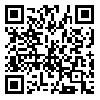Volume 72, Issue 11 (February 2015)
Tehran Univ Med J 2015, 72(11): 789-793 |
Back to browse issues page
Download citation:
BibTeX | RIS | EndNote | Medlars | ProCite | Reference Manager | RefWorks
Send citation to:



BibTeX | RIS | EndNote | Medlars | ProCite | Reference Manager | RefWorks
Send citation to:
Eskandari F, Soleimani M, Kalantari N, Azad M, Allahverdi A. Expansion of umbilical cord blood hematopoietic stem cell on biocompatible nanofiber scaffolds: brief report. Tehran Univ Med J 2015; 72 (11) :789-793
URL: http://tumj.tums.ac.ir/article-1-6508-en.html
URL: http://tumj.tums.ac.ir/article-1-6508-en.html
1- Department of Hematology and Blood Banking, Faculty of Medical Science, Tarbiat Modares University, Tehran, Iran.
2- Department of Hematology and Blood Banking, Faculty of Medical Science, Tarbiat Modares University, Tehran, Iran. ,soleim_m@modares.ac.ir
3- Department of Medical Laboratory Sciences, Faculty of Allied Medicine, Qazvin University of Medical Science, Qazvin, Iran.
2- Department of Hematology and Blood Banking, Faculty of Medical Science, Tarbiat Modares University, Tehran, Iran. ,
3- Department of Medical Laboratory Sciences, Faculty of Allied Medicine, Qazvin University of Medical Science, Qazvin, Iran.
Abstract: (6521 Views)
Background: Hematopoietic stem cell transplantation (HSCT) is a therapeutic approach in treatment of hematologic malignancies and incompatibility of bone marrow. Umbilical cord blood (UCB) known as an alternative for hematopoietic stem/ progenitor cells (HPSC) for in allogenic transplantation. The main hindrance in application of HPSC derived from umbilical cord blood is the low volume of collected samples. So, ex vivo expansion of HPSCs is the useful approach to overcome this restriction. Synthetic biomaterials such as nanofibers is used to produce synthetic niches. The aim of this study was the ex vivo expansion of hematopoietic stem cells on biocompatible nanofiber scaffolds.
Methods: This study was done at Tarbiat Modares University from November 2012 to June 2013 and was a research study. Umbilical cord blood CD133+ hematopoietic stem cells were separated using MidiMacs (positive selection) system by means of monocolonal antibody (microbeads) CD133. Flow cytometry was used to assess the purity of cells. Cell culture was done on plate (2 Dimensional) and fibronectin conjougated polyether sulfone nanofiber scaffold (3 Dimensional). Colony assay test was used to asses the ability of colonization of cells.
Results: Cell count analysis revealed the expansion of hematopoietic stem cells in cell culture plate (2D environment) and on nanofiber scaffold (3D environment) after 2 weeks. Expansion of cells in 2D environment was greater than 3D condition. Colony assay test revealed that the colonization ability of cells decreased after 2 weeks, but this decrease was lower in scaffold culture than plate culture.
Conclusion: This study demonstrated that umbilical cord blood CD133+ hematopoietic stem cells can expand on fibronectin conjugated polyether sulfone scaffold and we can use this system for expanding of cells in vitro situation.
Type of Study: Brief Report |
Send email to the article author
| Rights and permissions | |
 |
This work is licensed under a Creative Commons Attribution-NonCommercial 4.0 International License. |





